 |
SRGC Bulb Log Diary |
| Home Recommend This Site To A Friend |
|
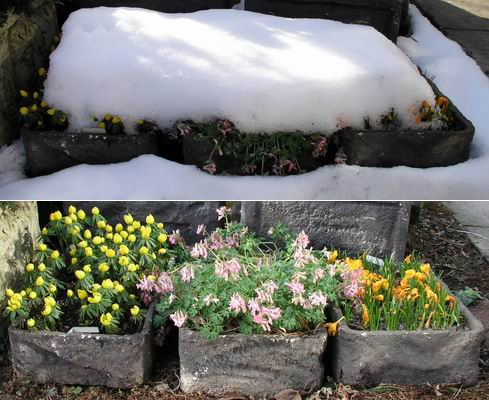 Troughs after the snow. Now the snow has gone it is amazing to see how well the bulbs have survived their ordeal of spending ten days buried in the frozen mass. The top view was taken just as these troughs started to reappear from under the blanket of snow and the lower one was taken a few days after the snow was gone. The Eranthis 'Guinea Gold' is totally unharmed, the Corydalis 'Beth Evans' has a few snapped stems but will continue to flower and the Crocus gargaricus was going over before the snow arrived but it is still sending up the odd flower. Bulbs growing in these 'fish box troughs' always flower about two weeks before their garden planted counterparts. 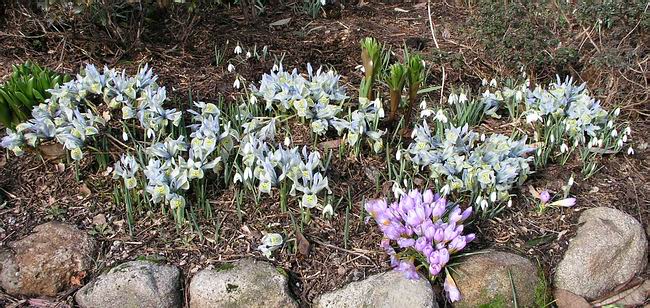 Iris 'Katherine Hodgkin'. I know I have said before how remarkable it is that such a delicate looking flower like Iris 'Katherine Hodgkin' can take all the weather you can throw at it and still come out looking like this. 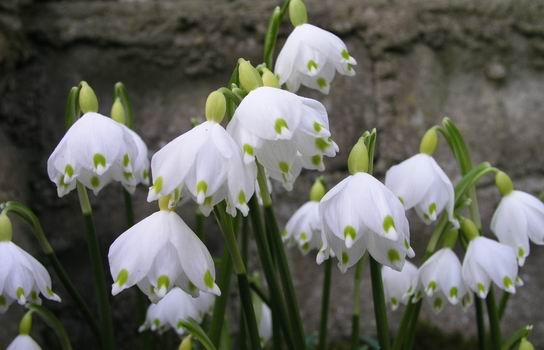 Leucojum vernum carpathicum. The lovely snow flake, Leucojum vernum var carpathicum, also survives being buried in snow and this is the form with yellow ovaries and tips to the petals (var carpathicum). The 'yellow' is variable and even on a single flower it can differ with one side being yellow (normally the side exposed to most light) while the other is green - also the term 'yellow' is relative, as it is not always a true yellow more a yellow/green, but distinct from the straight species. 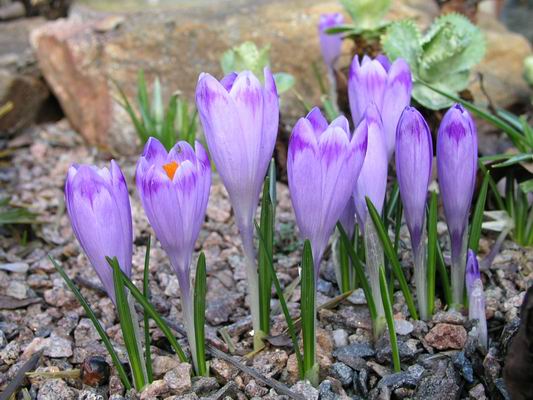 Crocus vernus heuffelianus. A lovely selection of the Crocus vernus group is a form called ssp. heuffelianus which has the typical darker markings towards the tips of the petals, some believe that Crocus heuffelianus should have species status. It is a lovely subject for a pot or the garden and if you raise it from seed you will be rewarded with a nice range of markings. 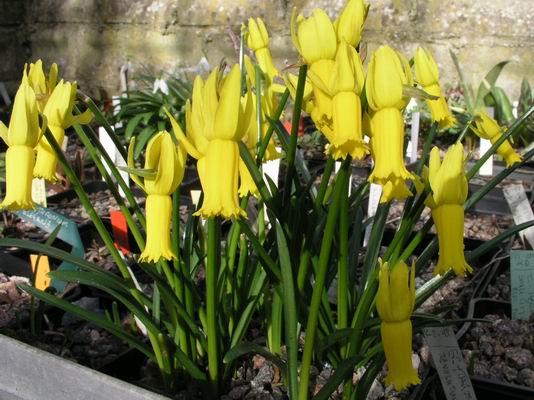 Narcissus cyclamineus. Also in an outside uncovered frame Narcissus cyclamineus shows no harm from being covered in snow - I love this little species. I think that because it appears in mass plantings in some old established gardens, pictures of which are commonly illustrated in books and magazines, it is often described as a common plant but it is not. It is a very difficult bulb to get hold of unless you grow it from seed and I think it will remain this way as it is not a bulb that is suited to mass production and being sold as a dried bulb like so many other narcissus are. 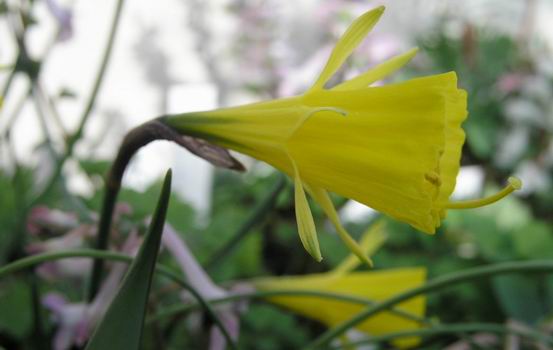 Narcissus bulbicodium nivalis. In the bulb house another nice form of Narcissus bulbicodium nivalis is in flower and you can see how the style sticks out well beyond the corona, this is part of the diagnostic for ssp nivalis. All of the forms of N bulbicodium I have showed over the last few logs are much shorter plants than the more commonly seen N. bulbicodium conspicuus and they flower earlier as well. 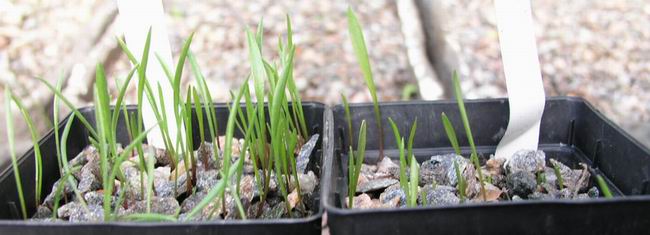 Frit seed 2 years. In the seed frames Frit seed is germinating well and second year leaves are also appearing. Above are two pots of seed that germinated last year reappearing with slightly larger more developed leaves . These pots have been grown in the open frame only getting covered occasionally if it is too wet in the summer or when the snow falls in the spring. Compare these with the next picture that shows three pots sown at the same time except these were moved under glass as soon as they germinated (at this time last year). 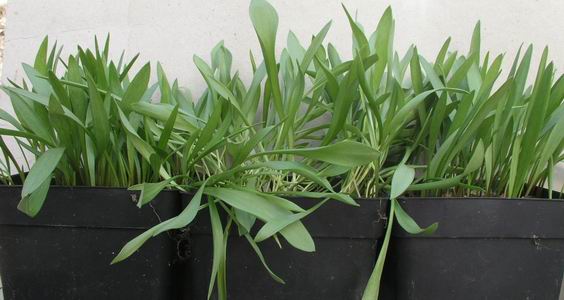 Frit seed 2 years plus. I am sure you can see the advantage that the extra care and the better-controlled growing regime brings, as these are much larger, more vigorous plants and will flower at least two years quicker that the outside ones - I wish we had more space under glass. 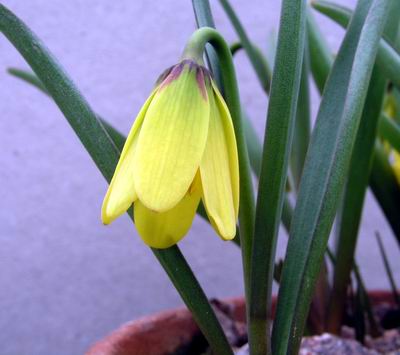 Frit pudica WA. This is a nice form of Frit pudica grown from seed collected in Washington state USA. Some of these seedlings, like the one illustrated, have a nice dark zone where the stem meets the flower - their flower is also larger and produced more reliably than on some of the older cultivated forms that we grow. 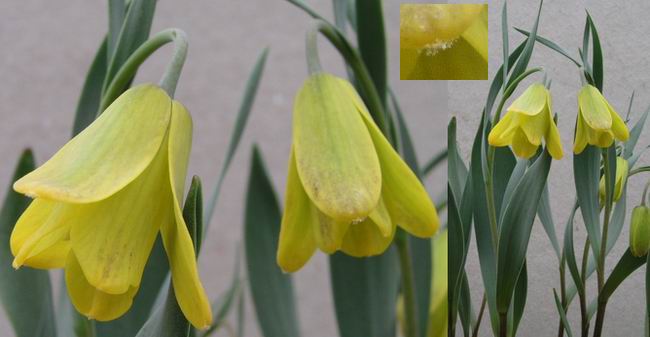 Frit carica x2 I suppose that Frit carica is superficially similar to F pudica but this plant comes form Turkey - notice the small 'hairs' on the tips of the petals, see inset enlargement, I am always trying to workout what purpose they serve. We grow lots of forms of this very variable species, I think you can become obsessed with these lovely bulbs. 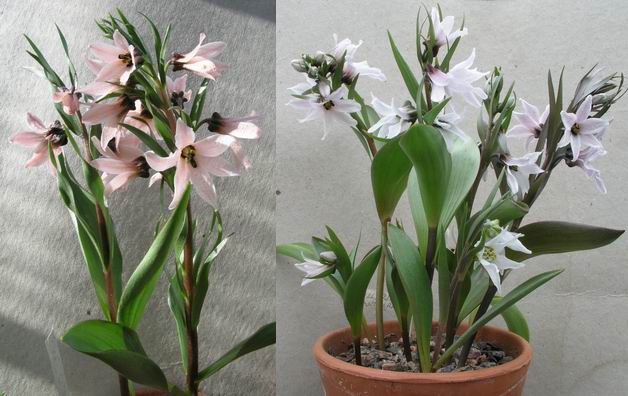 Frit stenanthera 2 forms Two pots of Frit stenanthera; on the left is a pink form that I have cloned out and the pot on the right shows the subtle variations of a pot of mixed seedlings. This is always one of the earliest of the rhinopetalum frits to flower for us - they also have a lovely scent that not everybody is able to detect, I am lucky that I can. 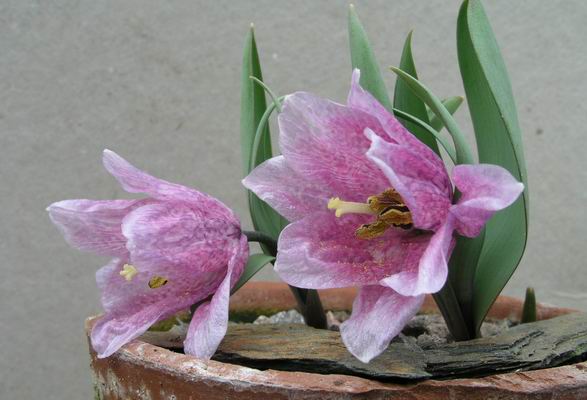 Frit alburyana. This little frit wins everybody over, this one we raised from seed and is similar to the ones that I have seen pictures of, growing by the hundreds in Holland. It has a deep purple/pink colour and is easier to grow than the first form that we ever had. Our original form came as bulbs, given to us by the late Harold Esslemont who got seed form the original introduction of this species. This form has a paler pink flower that appears about two to three weeks later than the one in the picture. I now grow most of our Frit alburyana in open plunge frames only bringing them under glass when the flowers open and this seems to suit them well - they are much less inclined to try and open their flower buds under ground. ^ back to the top ^ |